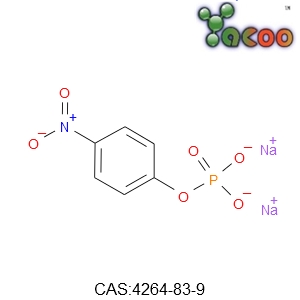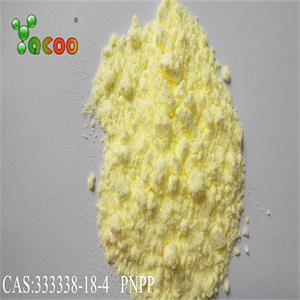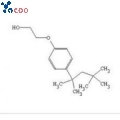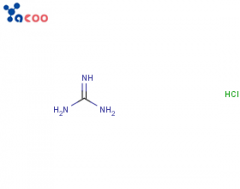Determination of p-nitrophenyl sodium dihydrogen phosphate phosphatase chromogenic substrate; Determination of acidic and alkaline phosphatase (phosphatases) chromogenic substrate; Reaction can produce yellow at the end of the product, the wavelength of 405 nm can be read, the reaction can be terminated by 3 N NaOH solution.
Catalog No. :
D0019CAS No :
4264-83-9Empirical Formula :
C6H4NNa2O6PMolecular Weight :
263.0524Assay :
≥99.0%Appearance :
White crystalline powderBrand:
YACOOport of dispatch :
shanghaioriginal region :
ChineseLead Time :
on stock
Determination of p-nitrophenyl sodium dihydrogen phosphate phosphatase chromogenic substrate; Determination of acidic and alkaline phosphatase (phosphatases) chromogenic substrate; Reaction can produce yellow at the end of the product, the wavelength of 405 nm can be read, the reaction can be terminated by 3 N NaOH solution
Description
Appearance & Physical State: solid
Density: 1.712g/cm3
Melting Point: 300ºC
Boiling Point: 457.8ºC at 760mmHg
Flash Point: 230.7ºC
Stability: Stable, but may be light sensitive. Incompatible with strong acids, strong bases, strong oxidizing agents.
Storage Condition: 2-8ºC


CERTIFICATE OF ANALYSIS
English Name:p-Nitrophenyl phosphate, disodium salt, hexahydrate
Molecular Formula:C6H4NNa2O6P·6H2O
Molecular Wt:371.14
CAS:4264-83-9
Shelf life: one year
|
SPECIFICATION PROPERTIES |
STANDARD |
RESULTS |
|
Appearance |
Pale white crystalline powder |
Conforms |
|
Assay,% |
≥99.0 |
99.49 |
|
Solubility(0.1M in 0.02M Tris) |
Light-yellow,clear solution |
Conforms |
|
Free Phenol,% |
≤0.1 |
Conforms |
|
Water Content,% |
28.0-32.0 |
28.69 |
|
OD value(0.01mol,405nm) |
≤0.4 |
0.31 |
Storage: 2-8℃, keep in dark place
Safety
Symbol:

GHS05
GHS08
Sign: Danger
hazard declaration: H290; H315; H318; H373
hazard declaration add:
waring notice: P260; P280; P305 + P351 + P338 + P310
Safety Statements: S24/25
HS Code: 2919900090
WGK Germany: 3
Risk Statements: R36/37/38
Hazard Codes: Xi
 High Purity Triton X-100 CAS:9002-93-1 OCTYLPHENYLPOLYETHYLENE GLYCOL
High Purity Triton X-100 CAS:9002-93-1 OCTYLPHENYLPOLYETHYLENE GLYCOL
 Guanidine hydrochloride CAS 50-01-1
Guanidine hydrochloride CAS 50-01-1
Copyright © Suzhou Yacoo Science Co., Ltd. All Rights Reserved
Friendly Links :
online service